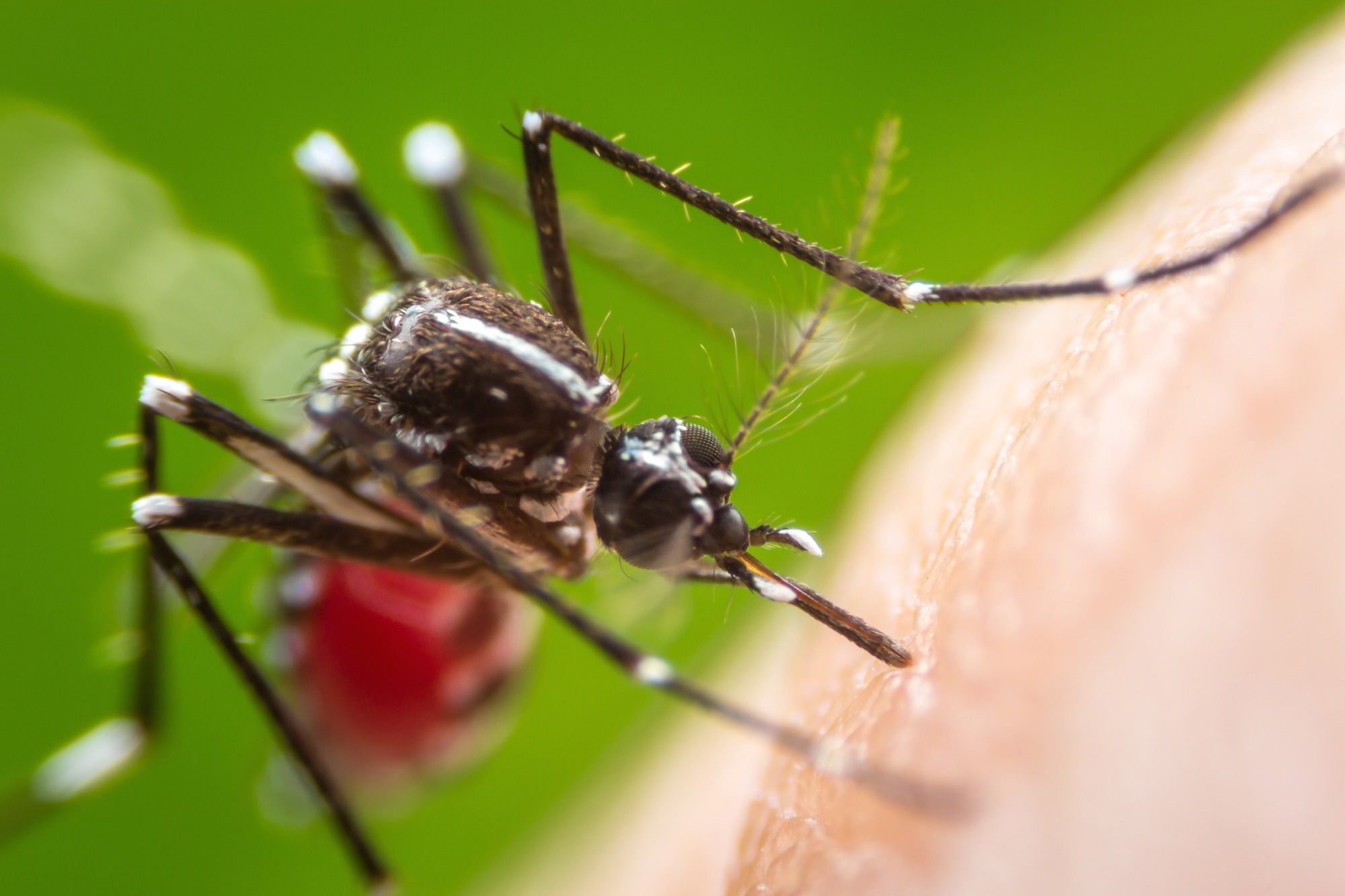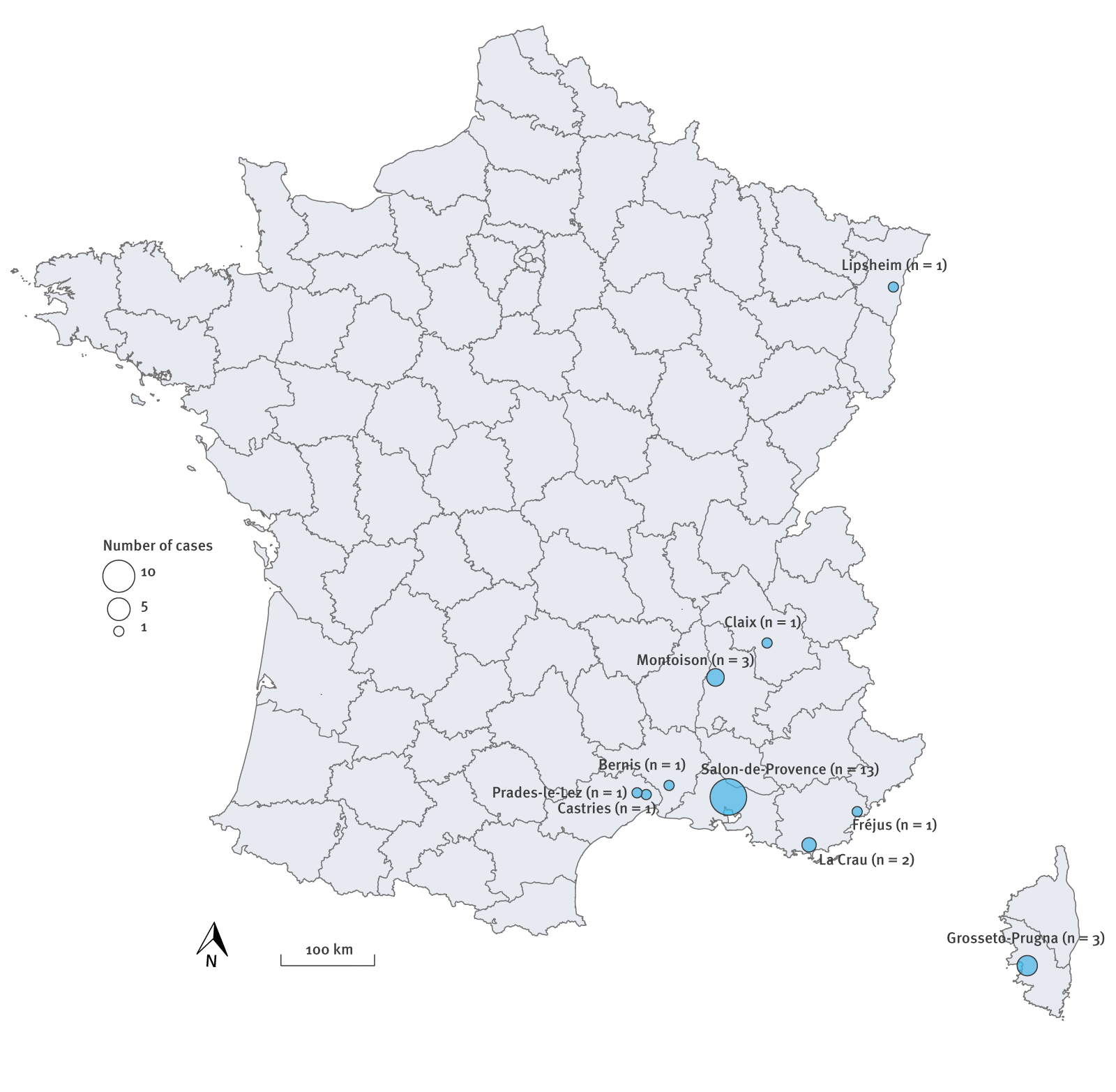A surge of imported cases from Réunion Island triggered France’s earliest chikungunya season ever, testing the limits of its surveillance system and exposing Europe’s growing vulnerability to mosquito-borne diseases.
 Rapid communication: Multiple early local transmissions of chikungunya virus, Mainland France, from May 2025. Image Credit: khlungcenter / Shutterstock
Rapid communication: Multiple early local transmissions of chikungunya virus, Mainland France, from May 2025. Image Credit: khlungcenter / Shutterstock
In a recent rapid communication in the journal Eurosurveillance, researchers from France's public health agency detail the current scenario of the chikungunya disease within the country. Specifically, the aftermath of a large 2025 chikungunya outbreak on Réunion Island led to a surge of imported cases in mainland France, triggering an unusually early and widespread season of local transmission.
The report highlights how, by July 10, 2025, 10 local outbreaks involving 27 people had been identified across five French regions. The first local transmission occurring in May (with symptom onset May 27) is the earliest recorded for any arbovirus (chikungunya, dengue, or Zika). These events, driven by the Aedes albopictus (tiger) mosquito, signal an escalating threat from arboviral diseases in Europe and significantly strain surveillance and response systems.
 Map of the autochthonous transmission events of chikungunya virus, Mainland France, May–10 July 2025 (n = 27)
Map of the autochthonous transmission events of chikungunya virus, Mainland France, May–10 July 2025 (n = 27)
Background
Chikungunya is a mosquito-transmitted viral disease caused by the chikungunya virus (CHIKV), an RNA virus in the alphavirus genus of the family Togaviridae. Formally a tropical disease localized in Africa and Southeast Asia, the range expansion of its vector (the Aedes albopictus mosquito) has allowed chikungunya to establish itself globally, particularly in large parts of Europe, including France.
The disease is characterized by high fever and moderate to severe joint pain that manifests suddenly within a week of infection. These symptoms may also be accompanied by muscle pain, headache, fatigue, and rashes.
Viral transmission follows a straightforward and well-documented pattern – an infected individual (termed an "imported case") travels from an outbreak area to a region where tiger mosquitoes are present. If a local mosquito bites that person during their viraemic phase (when the virus is in their blood), it can transmit the virus to other local people, creating an "autochthonous" or local transmission chain.
To combat this, France operates an enhanced surveillance system from May to November, aiming to rapidly detect imported cases and implement vector control to prevent local spread. However, in early 2025, this system faced significant challenges due to a massive chikungunya outbreak on Réunion Island, a French overseas territory (Indian Ocean).
About the Report
The present report represents a rapid communication detailing the real-time findings from France's mandatory surveillance system for Aedes-borne viruses. Conducted by researchers from Santé publique France (the French National Public Health Agency), the report aims to prevent or limit local chikungunya transmission by rapidly identifying and responding to both imported and autochthonous cases.
Surveillance data is collated and synthesized via daily monitoring of laboratory results and epidemiological investigations of confirmed cases. When a case is confirmed, public health authorities interview the patient to determine their travel history and establish the likely place of infection. If a case has no travel history, it is classified as autochthonous, initiating intensive local response.
Chikungunya mitigation measures and intensive local response include: 1. Door-to-door case finding to identify other potential infections, including tracing primary imported cases (successful in 4/10 outbreaks), and 2. Vector control measures, such as eliminating mosquito breeding sites and spraying insecticides and larvicides in the affected area.
Report Findings
The report credited the Réunion Island outbreak between January and April 2025 with a majority (n = 484; 78%) of the 620 imported chikungunya cases with symptom onset documented in mainland France between May and June 2025. By July 10, 2025, 1,911 imported cases had been notified, 89% linked to Réunion Island – the highest on record since French surveillance began in 2006. Notably, more than 86% of imported cases were viraemic during their stay in mainland France.
This massive influx triggered 10 autochthonous outbreaks comprising 27 cases identified by July 10. The largest cluster (unusually large compared to others) was in Salon-de-Provence with 13 people.
Critically, this marks the earliest arbovirus transmission season in France's history. Prior to 2025, the earliest first case occurred on June 12, with only 3 of 53 previously documented outbreaks starting in June. The median 9-day reporting delay for imported cases facilitated rapid response.
The outbreak in Lipsheim (Grand Est) is particularly significant as the first local transmission in this recently colonized region, where Aedes albopictus was only detected in 2015.
Conclusions
The present report highlights France's escalating arbovirus challenge and suggests that this is only the start of the expanding threat of mosquito-borne diseases in Europe. The combination of a large overseas outbreak (and its associated influx of cases), a Réunion strain well-adapted to Aedes albopictus, and the mosquito's northward expansion has demonstrated that local transmission can occur much earlier in the season than previously thought, even when vector densities are presumed to be low.
While the rapid detection and containment of these initial outbreaks highlight the effectiveness of France's surveillance system, the resource-intensive nature of door-to-door investigations and vector control measures raises concerns about the system's capacity if transmission trends continue to increase. This report underscores the urgent need for European policymakers to anticipate this growing risk through dedicated funding, contingency planning, and research.
Journal reference:
- Fournier, L., Durand, G. A., Cochet, A., Brottet, E., Fiet, C., Mano, Q., Krug, C., Verdurme, L., Blanchot, T., Fournier, R., Investigation team, Paty, M.-C., Grard, G., Franke, F., & Calba, C. (2025). Multiple early local transmissions of chikungunya virus, Mainland France, from May 2025. Eurosurveillance, 30(32), 2500545. DOI – 10.2807/1560-7917.ES.2025.30.32.2500545, https://www.eurosurveillance.org/content/10.2807/1560-7917.ES.2025.30.32.2500545#html_fulltext